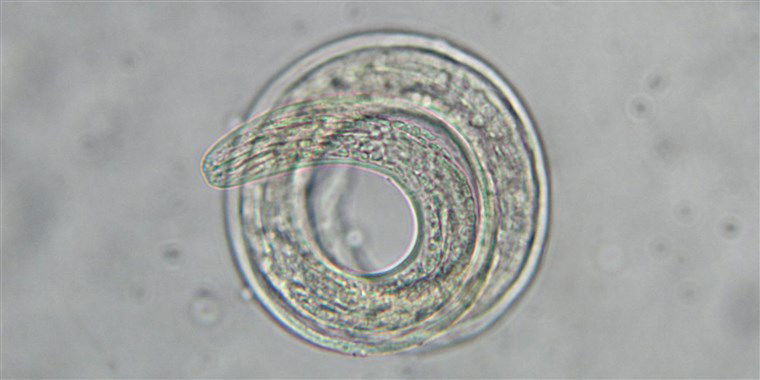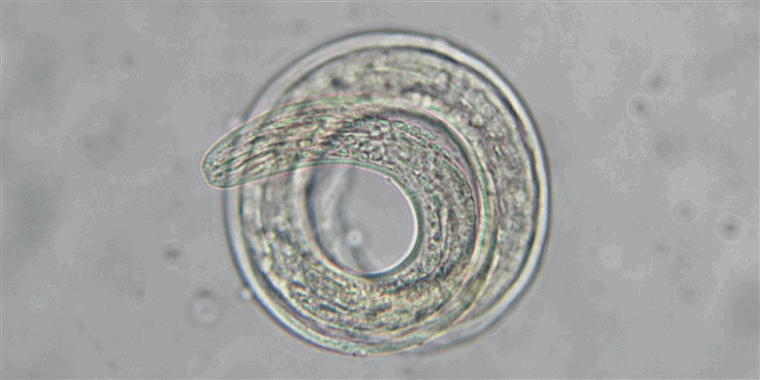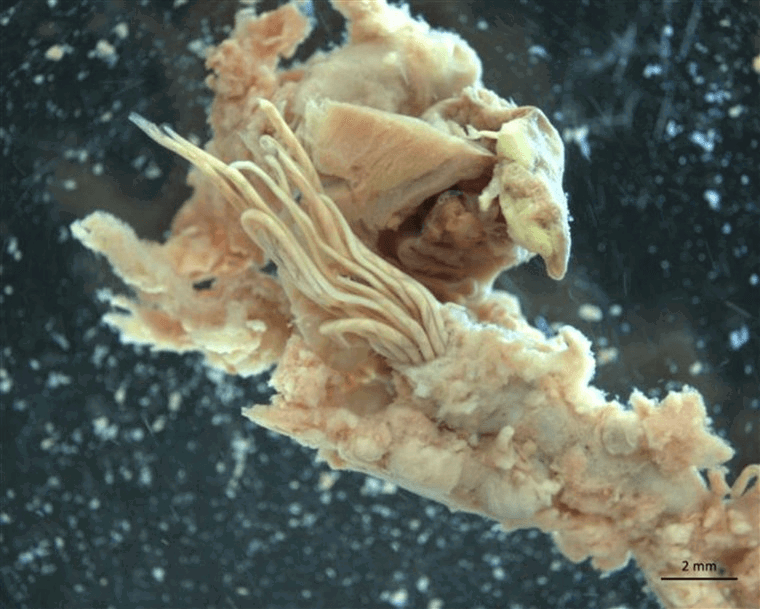What is rat lungworm? The parasite may be more common than people think

Rat lungworm made headlines after it infected two people in China who ate raw centipedes, but people might catch it by eating snails or vegetables from home gardens.
by Maggie Fox

A parasite called rat lungworm, which can get into people’s brains, has infected 12 people including toddlers in the continental U.S. in recent years, federal health officials said Thursday.
And more cases may have gone unreported, because the parasite often does not cause severe symptoms, and it’s been found across several states.
Rat lungworm made headlines last month after it infected two people in China who ate raw centipedes, but people living in the U.S. might catch it by eating snails or vegetables out of home gardens, the Centers for Disease Control and Prevention said.
Several of the infected are very young children, said Dr. Sue Montgomery, a senior epidemiologist at the CDC’s parasitic diseases branch who led the research team.

“They have a history of crawling around outside,” Montgomery told NBC News.
At least one of the infected children was known to eat dirt, and the children are likely to have accidentally eaten snails or slugs, she said.
Some of the affected adults said they had eaten fresh vegetables. “Some of the fresh produce had been grown in the backyard,” Montgomery said. “They probably inadvertently ate a snail or slug.”
Undercooked shellfish are another possible source of infection.
Travelers can catch the parasite, which originates in rats. Six of the cases identified by the CDC since 2011 were in people living in the southern U.S., including Texas, Tennessee and Alabama, the CDC said. The rest were in travelers who may have eaten the parasite overseas.
The CDC count does not include 18 cases reported in 2017 by the state health director of Hawaii, where the parasite is already a well-known risk.
Rat lungworm is a nematode whose scientific name is Angiostrongylus cantonensis. It has a stomach-churning life cycle that starts in rats.
“Their normal route in the rat is that they are ingested, they penetrate the intestine and they make their way to the brain, where they develop,” said Heather Stockdale Walden, a parasitologist at the University of Florida who has studied the worm.
“They come back to the pulmonary artery in the rat and they reproduce.” Rats excrete it and it can get picked up by snails and slugs, some of which are very tiny. The CDC explains its life cycle in a video.
“In humans or horse or dog or bird it’ll still penetrate the intestine and it’ll enter the circulation and go to the brain and that’s where it stops. It doesn’t finish its development into the worm,” Walden said in a telephone interview.
Walden led a survey last year that found the parasite all over Florida.
“We sampled snails. We sampled rats. We even collected rat feces off the ground, and we looked for the parasite and we found it in Florida from Miami to the Panhandle," she said.
“It is definitely there,” she added. “We found it in invasive species of snails and we also found it in the native snails here in Florida.”
Because the parasite thrives in warm weather, it is likely to become more common further north as the climate warms, she said.
It does not always cause symptoms in people, but when it does, it often causes a severe headache. When the parasite reaches the brain, it can cause meningitis, an inflammation of the membrane surrounding the spinal cord.
It also causes production of immune cells called eosinophils, which spill into the spinal fluid.
“It all depends on the number of parasites in there,” Walden said.
“Clinical signs of infection in adults include headache, stiff neck, fever, vomiting, nausea and paralysis of the face and limbs. The most common symptoms of infection in children are nausea, vomiting and fever,” the CDC said.
The CDC issued the report Thursday to remind doctors to consider the possibility of rat lungworm infection in people who have eosinophilic meningitis.
It’s rarely fatal and usually gets better on its own, although the meningitis can cause long-lasting neurological symptoms such as weakness or shaking. One of the 12 patients the CDC studied developed seizures.
The CDC’s advice: Don’t eat raw slugs or snails. Hawaii’s health department also warns against drinking water out of hoses, because snails can crawl inside them.
“Be sure to thoroughly wash any produce or raw vegetables before you eat them,” Montgomery advised.
And watch out for silly kid tricks.
“In 1993, a boy in New Orleans got infected by swallowing a raw snail on a dare. The type of snail he swallowed isn’t known. He became ill a few weeks later, with muscle aches, headache, stiff neck, a slight fever and vomiting. His symptoms went away in about two weeks, without treatment of the infection,” the CDC says on its website.
So I hoped you like the article - the original link is: https://www.today.com/health/what-rat-lungworm-cdc-says-parasite-may-be-more-common-t135023